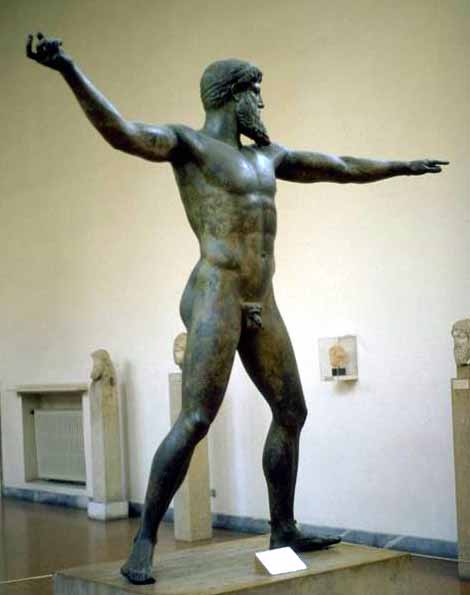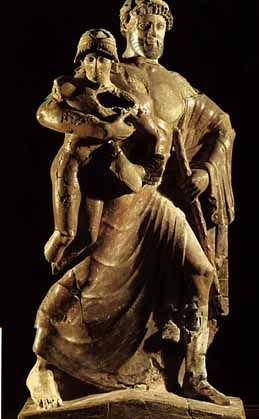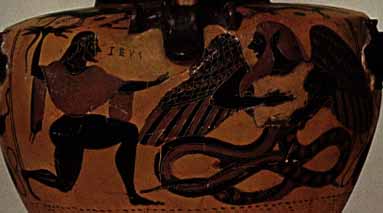

In 433 B.C. the Greek sculptor, Phidias, completed a magnificent statue of Zeus, king of Greek gods, at Olympia. The statue was housed in a tample built especially for it and was soon considered to be one of the Wonders of the Worls. For the Ancient Greeks it was a symbol of prfection, and every year thousands of people went to pay homage to Zeus at the shrine in Olympia. The statue took up the whole width of the temple's aisle. A writer of the time said it was 12m (about 40ft)
tall and that if able to stand up, its head would have gone through the roof. The statue remained in the tample for centuries, but the shrine was neglected in Roman times. In 1394 A.D. the statue was probably tke to Constantinople (Istanbul), where it seems eventually to have destroyed by fire.
Rhodes was a city, the capital of the Greek island Rhodes and the Colossus was a huge bronze statue of Helios, the sun god. The statue was almost as tall as the Statue of Liberty in New York Harbor. The statue stood on a promentory overlooking the city. Erected in about 280 BC by the citizens of Rhodes and was said to be 105 feet high. Legend has it that it straddled the entrance to the harbour, but it probably stood to one side. The Greek sculptor Chares worked for 12 years on the statue. He used stone blocks and about 7 1/2 short tons (6.8 metric tons) of iron bars to support the hollow statue. It was built in 280 BC,and unfortunately knocked down by an earthquake in 224 BC. The huge pieces were left where they fell and were looked upon with awe for centuries to come. Nearly a thousand years later, in AD 656, a scrap metal dealer bought the pieces and had them melted down.














